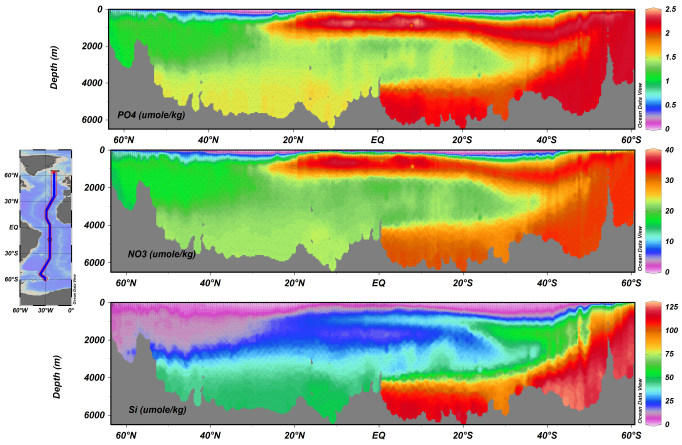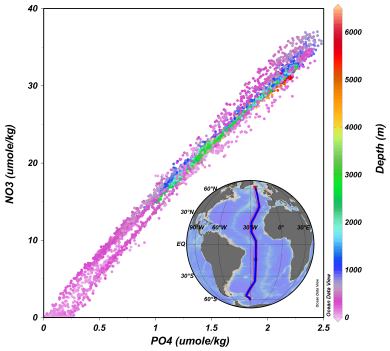Nutrient Biogeochemistry
 |
Contact Information for OCED Biogeochemistry Researchers:
- Jia-Zhong Zhang, PhD
Office Phone: 305-361-4512
Fax: 305-361-4447, Email: Jia-Zhong.Zhang@noaa.gov - Charles J. Fischer
Office Phone: 305-361-4443
Email: Charles.Fischer@noaa.gov
Selected Nutrient Biogeochemistry Publications:
Zhang, Jia-Zhong, Charles J. Fischer, and Peter B. Ortner, (2004). Potential availability of sedimentary phosphorus to sediment resuspension in Florida Bay, Global Biogeochemical Cycles, 18, GB4008, DOI: 10.1029/2004GB002255.
Zhang, Jia-Zhong and Xiao-Lan Huang (2007). Relative importance of solid-phase phosphorus and iron in sorption behavior of sediments. Environmental Science and Technology, 41(8): 2789-2795, DOI: 10.1021/es061836q.
Huang, Xiao-Lan and Jia-Zhong Zhang (2009). Neutral persulfate digestion at sub-boiling temperature in an oven for total dissolved phosphorus determination in natural waters. Talanta, 78:1129-1135.
Zhang, J.-Z., C. Kelble, C. Fischer and L. Moore (2009). Hurricane Katrina induced nutrient runoff from an agricultural area to coastal waters in Biscayne Bay, Florida. Estuarine Coastal and Shelf Sciences, 84:209-218. doi:10.1016/j.ecss.2009.06.026.
Zhang, Jia-Zhong, Xiao-Lan Huang (2011). Effect of temperature and salinity on phosphate sorption on marine sediments, Environmental Science & Technology, 45: 6831-6837. DOI: 10.1021/es200867p.
Zhang, Jia-Zhong and Charles J. Fischer, (2014). Carbon dynamics of Florida Bay: spatiotemporal patterns and biological control, Environmental Science & Technology, 48:9161-9169, DOI: 10.1021/es500510z.
